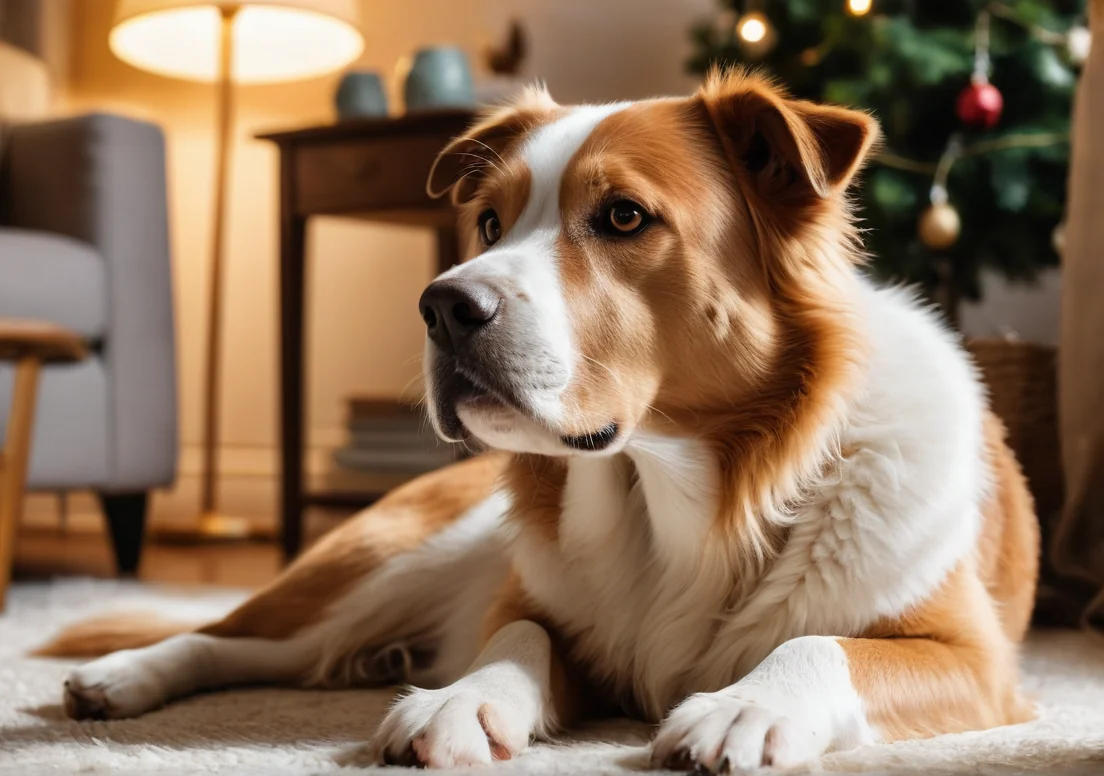Chewing on furniture, shoes, and anything they can get their paws on can be more than just a nuisance for pet owners; it can lead to costly damages and a stressed-out pet. When left alone at home, many dogs engage in destructive chewing as a way to cope with boredom or anxiety.
To prevent this behavior, it’s essential to identify triggers and implement solutions like interactive toys, safe chew items, or even training techniques. There’s a treasure trove of insights and unique strategies ahead to keep your furry friend entertained and your belongings safe—read on to discover more!

What causes destructive chewing when home alone
Destructive chewing is a common challenge for many dog owners, often triggered by anxiety, boredom, or simply a lack of sufficient exercise.
Anxiety can play a significant role, especially in dogs that struggle with separation anxiety. When left alone for extended periods, they might chew anything they can get their paws on to self-soothe or express their distress. If your pup starts chewing while you’re away, it’s essential to assess their emotional state.
Then there’s boredom. Dogs are social creatures that thrive on interaction and mental stimulation. If they’re home alone with nothing to occupy their minds, they might turn to your shoes or furniture out of sheer frustration.
Lack of exercise can also contribute. Dogs, especially high-energy breeds, need daily physical activity to keep them out of trouble. When they don’t get enough stimulation, they may feel restless, leading them to destructive behaviors.
To tackle these triggers effectively, it’s crucial to observe your dog’s routine and tailor their environment to mitigate these issues.
How can interactive toys help
Interactive toys aren’t just a luxury; they can be a game changer in preventing destructive chewing. These toys are designed to engage your dog physically and mentally, offering a welcome distraction from your belongings.
Providing your dog with stimulating toys can dramatically reduce the urge to chew on inappropriate items. Here’s how:
- Engagement: These toys require dogs to think and problem-solve, keeping their minds busy.
- Physical activity: Many interactive toys encourage movement, helping to expend some of that pent-up energy.
- Self-entertainment: With the right toys, dogs can keep themselves occupied for longer periods, making them less likely to choose destructive options.
Consider toys that dispense treats or require some level of interaction to unlock goodies; they’ll keep your dog’s attention for longer.
A few types of interactive toys to consider:
- Puzzle feeders: Encourage mental stimulation by making your dog work for their food.
- Kong toys: Stuff them with peanut butter or treats to keep your pup busy.
- Tug toys: Great for expending energy while also bonding with your dog during play.
- Electronic toys: Remote-controlled or automatic toys that move or make noise can capture your dog’s interest effectively.
- Snuffle mats: Hide treats in fabric layers, encouraging sniffing and foraging behavior.
Lastly, always rotate your dog’s toys to keep them fresh and exciting. Stale toys can lead to boredom, negating the benefits of interactive play.
What are safe chew alternatives
Destructive chewing often stems from boredom or anxiety, so providing your dog with safe chew alternatives can help satisfy that natural instinct. Here’s a list you might find useful:
Rubber Chew Toys : Durable and often designed for heavy chewers, these can withstand hours of gnawing. Look for brands like KONG, which you can stuff with treats for added appeal.
Edible Chews : Options like bully sticks or sweet potato chews not only taste great but also provide a satisfying chew experience. Just be sure to monitor your dog to avoid choking hazards.
Nylon Bones : These are perfect for long-lasting chewing sessions. Some even have flavors that dogs find irresistible, helping keep them engaged.
Dental Chews : Specifically designed to promote dental health, these products can help redirect chewing habits while keeping your dog’s teeth clean.
Frozen Treats : Freeze some peanut butter or yogurt in a toy for a refreshing and engaging chew session. The cold will keep them busy for a while!
Natural Chews : Consider things like cow hooves or antlers. They can provide hours of entertainment, but make sure they’re suitable for your dog’s chewing strength.
Offering these alternatives can often prevent your pup from turning its attention to your shoes or furniture.
How does exercise impact chewing behavior
A dog’s energy levels play a crucial role in their chewing habits. A bored and restless dog is far more likely to engage in destructive chewing as a way to release pent-up energy. Engaging your dog in regular exercise can drastically cut down on these unwanted behaviors.
Taking your furry friend for a daily walk, engaging in a game of fetch, or providing opportunities for mental stimulation through puzzle toys can help channel their energy positively. Regular activity not only tires them out but also boosts their overall mood.
Especially before leaving your dog home alone, a vigorous play session can make a significant difference. It’s not just about physically tiring them out; the mental stimulation from exploring and interacting with you during these sessions plays a vital role in their behavior.
In fact, studies suggest that dogs who get adequate exercise tend to chew less destructively, as they’re less likely to suffer from boredom or anxiety. It’s all about keeping their minds and bodies active! Consider integrating structured playtime or even canine sports into their routine—it’s a fun way to promote good habits while strengthening your bond.
What training techniques are effective
Destructive chewing isn’t just a nuisance; it can lead to costly damages and unhappy pups. Fortunately, positive reinforcement can make a world of difference. Start by identifying what triggers your dog’s chewing habits. If they seem restless or bored, introducing interactive toys can be a great distraction.
Clicker training is another effective method. Every time your dog chooses a toy over your furniture, use the clicker to mark the behavior and follow up with a small treat or praise. This reinforces their positive choices and helps them connect the dots between appropriate behaviors and rewards.
Consistency is key. Set up a routine where your dog knows what’s expected. For example, if they have a designated chew toy, ensure it’s available every time you’re gone. Over time, they’ll learn to seek out the approved items rather than your shoes or furniture. Short training sessions throughout the week can create an engaging environment. And remember, don’t punish your pup for mistakes; instead, redirect them to the right choice while giving plenty of encouragement for good behavior.
How can creating a calming environment help
A calm environment can significantly reduce anxiety-driven chewing. Dogs, just like us, thrive in spaces that feel secure and comforting. One effective approach is to create a cozy space just for them. A comfortable dog bed in a quiet corner can become their safe haven when you’re away.
Consider using aromatherapy. Scents like lavender can have a relaxing effect. You could use a specific essential oil diffuser designed for pets, as some essential oils aren’t safe for them. Soft music or nature sounds can also soothe their senses.
Another tip is to keep engaging toys available to help divert their attention. Puzzle toys stuffed with treats can keep your furry friend occupied, providing mental stimulation.
A highly relevant insight here is to pay attention to the transition process when you leave. Instead of dramatic goodbyes that can heighten anxiety, practice low-key departures. This way, your dog doesn’t associate your leaving with a negative experience, helping them stay calm and less prone to destructive chewing.
- Create a cozy nook – A specific space where your dog can retreat can ease anxiety.
- Use calming scents – Lavender or chamomile can create a soothing atmosphere.
- Engaging toys – Puzzle toys keep their minds busy and distracted.
- Low-key interactions – Ensure your departure doesn’t include emotional farewells.
- Routine matters – Establishing a consistent schedule can create a sense of security.
Lastly, always remember to leave behind something with your scent, like an old t-shirt. Dogs often find comfort in familiar smells, which can help ease their anxiety while you’re not home.
Are there products that help with chewing issues
Destructive chewing often stems from boredom, anxiety, or teething, especially when your dog is home alone. Luckily, there are specific products that can help curb this behavior.
Deterrent sprays can be a game changer. These sprays have an unpleasant taste, discouraging your furry friend from chewing on furniture or other off-limits items. Look for options like Bitter Apple or Bitter Orange, which are safe yet effective.
Anxiety-relieving items can also play a crucial role. Puzzle toys filled with treats keep your dog mentally stimulated, significantly reducing the chance of chewing out of boredom. Stuffed Kongs or similar toys are a great option, as they can be frozen for added enjoyment.
Another excellent choice is heavy-duty chew toys designed for aggressive chewers. Brands like Nylabone and Kong Extreme offer durable products that can withstand enthusiastic gnawing.
Additionally, consider calming collars or vests infused with pheromones. They can help ease your dog’s anxiety when you’re not home.
Lastly, if your dog is prone to separation anxiety, look into CBD oil or treats formulated for pets. They may help soothe your dog during lonely moments. Just be sure to consult your vet before trying any new products. Having the right tools at your disposal can make a world of difference in preventing destructive chewing.
Proper socialization is essential for a well-adjusted dog and can dramatically reduce destructive chewing. Dogs, like people, thrive on interaction and stimulation. When they’re not exposed to different environments, people, and pets, they can become anxious. This anxiety often translates to unwanted behaviors, including chewing.
Taking your dog to puppy classes, local parks, or dog-friendly events exposes them to new experiences. This exposure helps build confidence, making them more adaptable when left alone.
It’s also beneficial to set up play dates with other dogs. This not only provides a fun outlet for energy but also allows your dog to learn appropriate behaviors from their peers.
A unique insight into socialization is the power of structured routines. Establishing a consistent daily schedule that includes walks, playtime, and training can greatly ease your dog’s anxiety about being alone. Knowing they have a regular routine can foster a sense of security, which directly reduces the urge to chew destructively.
Overall, investing time in your dog’s socialization not only helps ward off anxiety but also nurtures a stronger bond between you and your furry friend.
What are some fun activities for alone time
Keeping your furry friend entertained while you’re away is crucial to preventing destructive chewing. Dogs thrive on engagement, so incorporating a mix of toys, puzzles, and interactive activities can make a significant difference.
Rotating toys : Instead of leaving out all toys at once, try rotating them every few days. This keeps their interest piqued. They’ll feel like they’re getting “new” toys regularly.
Puzzle games : Invest in some puzzle toys that dispense treats when solved. These stimulate your dog’s mind and encourage them to think critically, keeping them busy.
Kong stuffed treats : Fill a Kong toy with peanut butter or their favorite treat and freeze it. This will keep them occupied for a while as they work to get every last bit.
Scent games : Hide treats around the house and let them sniff them out. Not only does this engage their sense of smell, but it gives them a sense of purpose.
Interactive cameras : Consider a pet camera that lets you interact with them. Some models even toss treats, so you can give them a surprise while you’re out.
In addition to these activities, try setting up a cozy spot with a blanket or your worn clothing. Familiar scents can be comforting, making the time alone less stressful.
What should owners do if chewing persists
If your dog’s chewing habits haven’t improved despite your best efforts, don’t panic. It’s vital to take a proactive approach. Here’s how to tackle excessive chewing:
First, assess your dog’s environment. Are there tempting shoes or furniture within reach? Clear away anything that could lead to temptation.
Consider increasing exercise before you leave. A good walk or play session can tire them out, reducing the likelihood of destructive behavior when they’re alone.
If chewing continues, it might be time to investigate potential underlying issues. Anxiety, boredom, or lack of stimulation are common culprits. Consulting with a veterinarian or a canine behaviorist can provide clarity and tailored solutions.
Engagement alternatives like doggy daycare or playdates with other dogs can also be a game changer.
If all else fails, therapy options such as use of calming aids (like anxiety vests or pheromone diffusers) can help soothe anxious pups, giving them a sense of security during your time away.
Keeping an eye on these indicators and adjusting your strategy can work wonders in curbing destructive habits. Remember, your furry friend is just looking for ways to cope.
Alex, a passionate animal lover, has experience in training and understanding animal behavior. As a proud pet parent to two dogs and three cats, he founded AnimalReport.net to share insights from animal experts and expand his knowledge of the animal kingdom.




